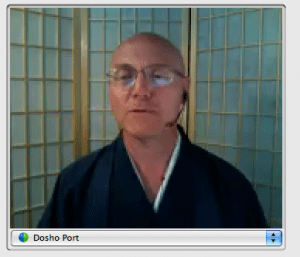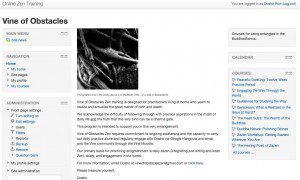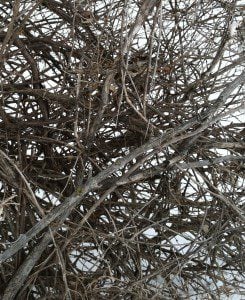 Most Zen practitioners today do what I call “home-based practice” rather than monastic or center-based practice. This is one of the big differences between the past and the contemporary world that Zen training must address to be relevant and powerful.
Most Zen practitioners today do what I call “home-based practice” rather than monastic or center-based practice. This is one of the big differences between the past and the contemporary world that Zen training must address to be relevant and powerful.
A couple thoughts about this today thanks to a gHangout meeting with Steve.
First, I’ve found it helpful to think about home-based practice more like hermit practice than monastic practice. Here’s one important difference – in monastic practice, we can relax into the flow of the group, into “the schedule,” and be held up in our intention by the group. At home, we must work our edge much differently, take much more personal responsibility for practice, and apply much more sensitivity to what brings life and joy to our practice. And most importantly, we must celebrate our successes.
“Celebrating” might not sound very “Zen” and I suggest that is exactly (part of) the problem. When practicing at home, if we don’t enjoy our practice, even have fun with it, then it is really difficult to continue.
Granted, we might need to develop a hinky sense of humor to find fun in the great matter of birth and death.
Anyway, many home-based practitioners suffer from allowing a negative self-told narrative to colonize their attitude toward their practice-enlightenment project. One way to address this is to focus on the positive – yes, patting ourselves on the back from following through with the heart’s innermost request.
Second, the technology is now available to support home-based practice like never before. From video-voice practice meetings, online forums, and moodles it is more possible to practice with intensity in the home-based world than ever before. The Vine of Obstacles: Online Support for Zen Training is one program designed to facilitate just such a practice.
Real Zen work can be done in this manner.
One barrier for many of us oldsters is that we live in a segmented universe – the online technologies and in-the-flesh worlds being two. Many twenty-somethings seem especially ready for this kind of practice, living in a non-segmented universe with technology and in-the-flesh life integrated seamlessly.
And like someone once said about plastics, it’s the future, boy. Think about it.











